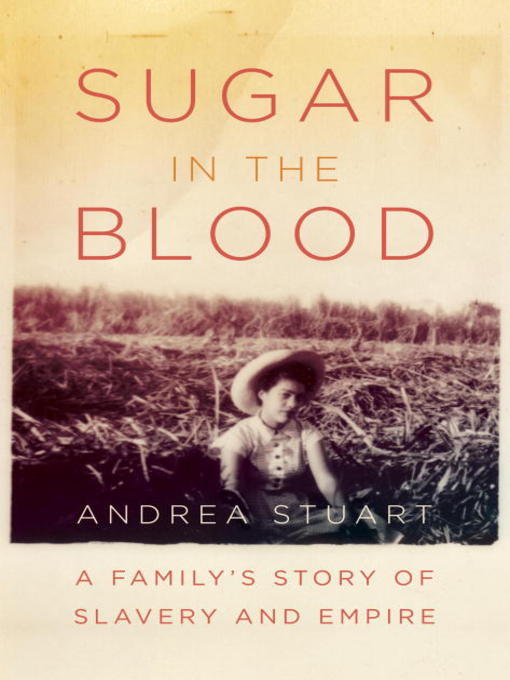
Sugar in the Blood
A Family's Story of Slavery and Empire
کتاب های مرتبط
- اطلاعات
- نقد و بررسی
- دیدگاه کاربران
نقد و بررسی

Starred review from November 26, 2012
Doing research in the air-conditioned Barbados Museum, acclaimed writer Stuart (The Rose of Martinique) stumbles upon her maternal grandfather eight times removed, George Ashby, who migrated to the island from England in the late 1630s. Brilliantly weaving together threads of family history, political history, social history, and agricultural history into a vivid quilt covering the evolution of sugarâ"white gold"âand slavery and sugar's impact on the development of Barbados as well as on her own family. Stuart recreates her ancestors' lives vividly as she tries to imagine how arduous and challenging life would have been for them, especially in Ashby's case, and as the island grew as the lust for sugar developed. Sugar cane first came to the island in 1620, but it was only around 20 years later that the first sugar factory was built. Since the process of cultivating sugar was more arduous and expensive and required more labor than growing tobacco, planters soon started buying slaves to bolster their labor forces and very quickly the black population of Barbados outnumbered the white. Stuart imagines the uneasiness that would have existed in the Ashbys' household between whites and blacks, slaves and free, just as it did in other farms on the island. Stuart powerfully concludes that the legacy of sugar boom and the slave trade in the Caribbean are not so easily forgotten, for sugar "has shaped our economies and national identities, and by pulling together the unique racial mix of the islands," the transformation wrought by sugar and slavery is "written across our very faces" and the politics of color.

December 1, 2012
The tortuous, unsweetened story of the author's English forebear as he migrated to Barbados to grow rich from sugar and slavery. Caribbean-born, English-educated Stuart (The Rose of Martinique: A Biography of Napoleon's Josephine, 2004) examines the narrative of her ancestor George Ashby, a middling-born English migrant who bought a small plot in Barbados around 1640 and thrived from the bumper crop of sugar. Like many migrants of the time, Ashby was young, enterprising and possibly down on his luck, but determined to apply his "plantation skills" (he was a blacksmith by trade) to make a go in the wilds of the New World. Stuart adeptly re-creates the early life of a small farmer like Ashby, just as Barbados, a small island muscled out in the growing of tobacco by larger colonies like Virginia, took up the planting of sugar to spectacular success by the end of the 1640s, requiring more laborers and thereby prompting the replacement of indentured servants and natives with hardier, cheaper African slaves. The European migrants set aside any repugnance to slavery to make a profit, and Stuart effectively demonstrates how the organization of this "first slave society" in Barbados defined all aspects of the institution of slavery, setting the model for the rest of the British Americas. Ashby prospered by the purchase of slaves and more land, and Stuart traces over many generations and mixed parentages between master and slaves and shows how this uneasy relationship essentially created the complicated, rich, tragic legacy of the modern Caribbean. An intractable, unwieldy story both intimate and universal, handled expertly by Stuart.
COPYRIGHT(2012) Kirkus Reviews, ALL RIGHTS RESERVED.

August 1, 2012
The Caribbean-born Stuart, who won the Enid McLeod Literary Prize for The Rose of Martinique: A Biography of Napoleon's Josephine, goes broader in a book that should attract significant readership. Drawing on her family history, she shows how sugar, slavery, and New World colonization are intimately linked, then brings the story up to today. Amazing how a single crop can change everything.
Copyright 2012 Library Journal, LLC Used with permission.

December 15, 2012
Biographer Stuart found George Ashby, her maternal grandfather eight times removed, at the farthest reaches of her family tree, dating back to 1620. He was among thousands who embarked on an immigrant's journey from the Old World, with its severe social and economic strictures, to the New World, with its seemingly unbounded opportunities. Ashby landed in Barbados and began a sugar plantation that has continued to the present, a heritage that extended through miscegenation to Stuart's black progenitors. Stuart vividly portrays the realities of race, class, and sex, as played out in the pursuit of riches afforded by the white gold of sugar plantations. In this family history, rich in detail, Stuart tells the story of immigration, the harsh realities of Caribbean slavery and sugar production, and the ambitions of black West Indians that have driven their own immigrant journeys to the U.S. and Europe. Stuart, acclaimed author of The Rose of Martinique (2004), offers a fascinating look at her own family, the embodiment of the global history of European immigration, the Atlantic slave trade, and the African diaspora.(Reprinted with permission of Booklist, copyright 2012, American Library Association.)

























دیدگاه کاربران